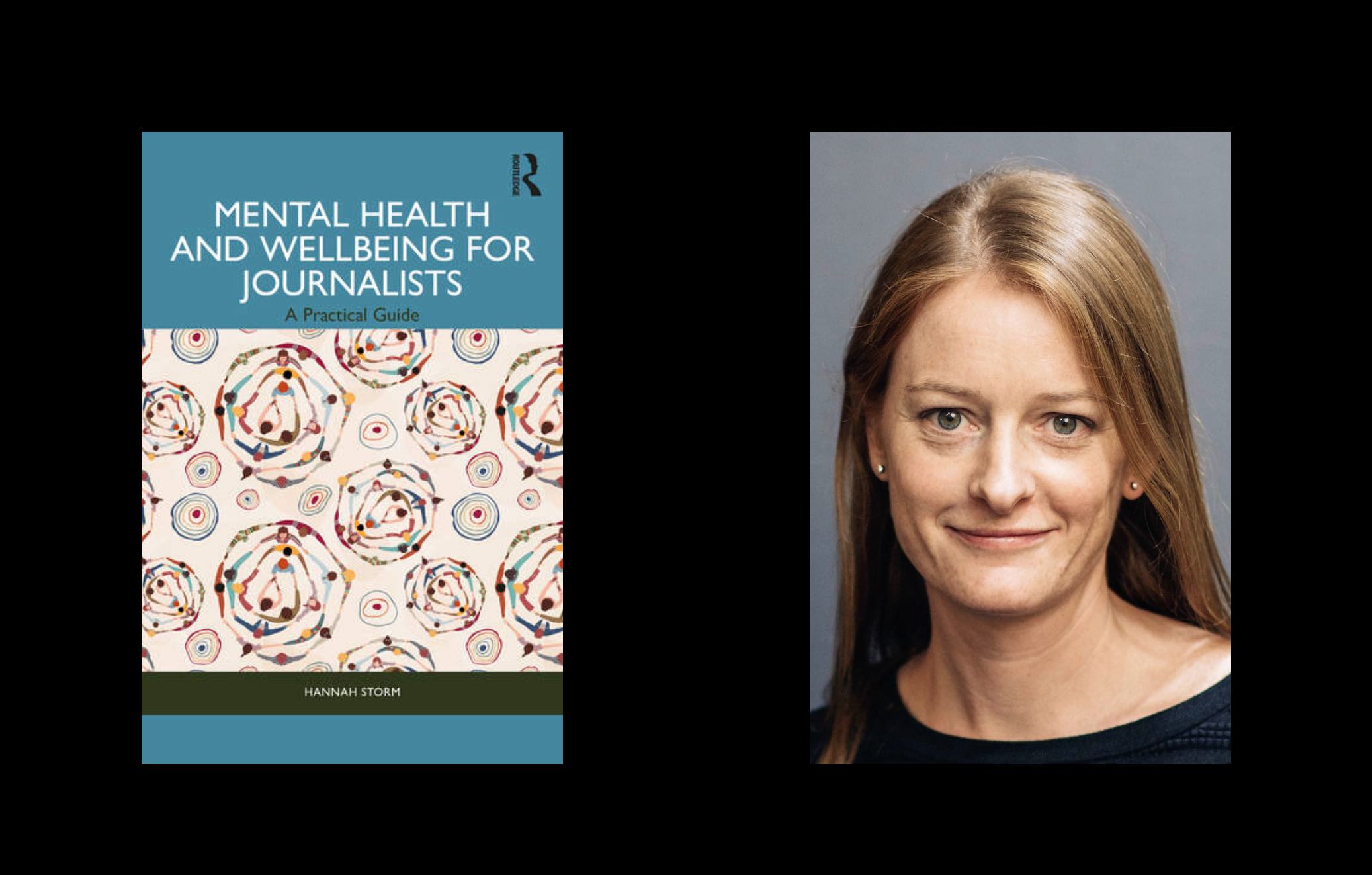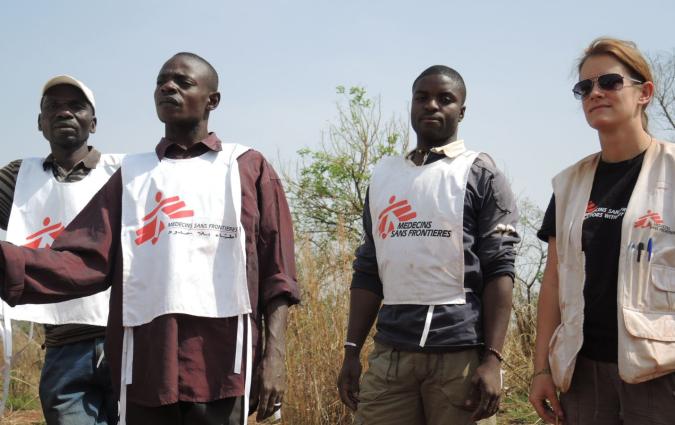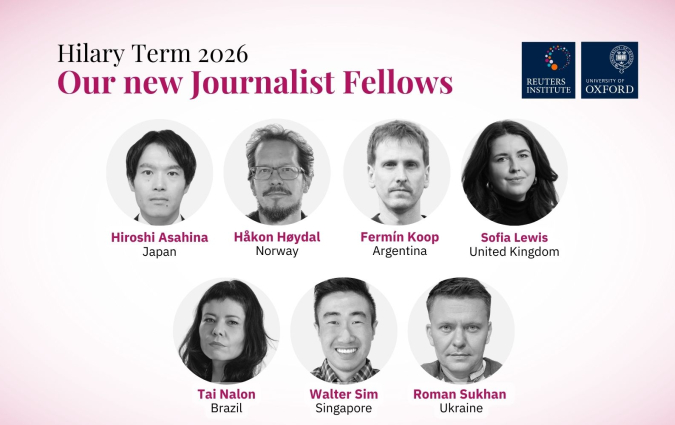How to exercise newsroom leadership with empathy

Hannah Storm's book on mental health and wellbeing for journalists. | Cover of the book published by permission of Taylor & Francis.
This is an excerpt from the book 'Mental Health and Wellbeing for Journalists' by Hannah Storm, published by Routledge. It's reproduced here by permission of Taylor & Francis Group.
Good journalists do not necessarily make good managers. This is a frequent refrain in my conversations with colleagues. And yet rarely are journalists who become managers offered the relevant training and resources to enable them to feel equipped to support the diverse needs of the journalists who report to them, and to deal with the demands that they face from higher up the news organisation.
Since the pandemic, pressures on managers have become more pronounced. Many seem to be stuck in what I’ve heard called ‘a stress sandwich’, responding to the needs and demands of those they manage, as well as the expectations from those more senior. Recent years have brought additional pressures, particularly for first-time managers, positions that are frequently tough to take on. Many have missed out on mentoring themselves, and have to supervise people remotely. Those who became managers during COVID-19 have probably been disconnected from support structures at work. And aside from professional stresses, managers often carry significant personal responsibilities, with caring roles for elderly or young family members, or both.
Pulled in so many directions, it is little wonder many managers seem to have lost sight of their own needs. I run a regular industry conference, attended by news leaders from several major media organisations. I vividly remember asking them at one stage who was looking out for their mental health, and the answer: nobody. Many managers feel they do not have time to make themselves a priority. But they must, and they would do well to remember airline safety briefings and put on their own oxygen mask first. If they don’t, they won’t be able to support others, and, even worse, they may start having a negative impact upon their work environments and colleagues.
But it is hard to juggle so many things when the demands of journalism are intense, resources scarce and workflows unrelenting. Mar Cabra, founder of The Self Investigation, an organisation providing tools to support media workers’ wellbeing, has witnessed this herself:
You become a manager because you were a good reporter. And you are promoted, and you have no training on how to lead people and how to manage people. They need to be trained about mental health issues, but they also need to be trained about basic leadership, managing people skills, and that’s quite a challenge.
Although she was referring specifically to Spanish-speaking countries, the same is true elsewhere:
One of the things that we know from research that helps teams, is doing one-on-one meetings. But a lot of leaders that we’ve trained in the past years tell us, ‘Yeah, all these things about one-on-one meetings are great; how do I ft it in my schedule?’ And that is because they are doing just too much. We also need to rethink the workfows around what managers do, or maybe add the skills and the time that they need to develop them. Because [without this], it’s very frustrating, and what we’re seeing is that middle managers and top managers are among the frst to burn out and to have mental health challenges.
Phil Chetwynd is the Global News Director of Agence France-Presse, where a lot of thought has been given to how they can make use of workfows to support the wellbeing of their staff and their journalism. He explained how they had been trying to fnd ways to reshape the news processes to ease some of the pinch points where managers become overwhelmed, saying:
Of course, even with the best will, it can be a challenge for managers. I see so much going on, people being overwhelmed all the time; somebody steps up for the first time and takes responsibility, and then is plunged into, ‘God it’s limitless and it’s all on my shoulders and what if, what if, what if.’
In the past, AFP has used coaches to help managers when they encountered trouble, but they are now using them proactively:
Now we’re thinking, [when] someone steps up into a position for the first time, they need a coach to tell them how to manage this environment, things you take for granted when you’ve got more experience [like], ‘It’s an earthquake, I know how this works’, instead of a void of, ‘Oh my God, there are so many things [to do].’
This multitude of ‘things’ can prove an obstacle to ensuring conversations are had around mental health. In an intensive, deadline-driven news environment, managers may want to consider the best ways of checking in with their colleagues, explained Dr Sian Williams, broadcaster, author and psychologist:
I would say we need to rethink how we’re viewing support. When we say, ‘a mental health conversation’, that to me sounds really heavy. And I’m not sure whether as a journalist working to a deadline – which I’ve always done, because I’ve always worked in daily news – I would relish somebody saying, let’s have a conversation about mental health, about your mental health.
That doesn’t mean there isn’t a place for a mental health conversation; however, certain news environments might not be conducive to opening up, particularly if people are feeling fragile. Instead, Dr Williams said managers should consider the best ways to help their colleagues understand that they are there for them.
It’s about sometimes holding difficult things as lightly as possible in a constricted, deadline-driven environment. You can’t have open conversations about mental health in a newsroom, which is deadline driven. It’s got to be the right space, and the right time, and you’ve got to be in the right frame of mind. And that’s great if you’ve got all that. If you haven’t got all that, get to it in different ways: ‘If everybody’s working really late tonight, I’m buying the pizzas; what does everybody want?’ Sit around, let’s just get 15 minutes and conversations come from that.
Santiago Lyon is the former head of photography for another global news giant, the Associated Press. He echoed the concerns of Cabra, Williams and Chetwynd around the relentlessness of the news industry and the related challenges in terms of mental health support.
It seems like things are going faster and faster and faster, and people have less time to focus in on these kinds of things. As a result, maybe people who are exposed to traumatic experiences and need help processing those experiences don’t get the time that they deserve, whether that’s through organisational shortcomings, individual leadership shortcomings or just the frenetic pace of the news and this notion that it’s urgent and something needs to be done.
Having gone on to work for Adobe, he sees far higher levels of empathy and emotional quotient in his new industry, and attributes that to the rigour of and investment in recruitment and retention, something his former profession might learn from:
I think that at the heart of any solid leadership lies empathy and the ability of leaders to engage with their employees in an empathetic way. And then organisational empathy, that allows people to take the time they need, provides the resources people need, doesn’t stigmatise things.
Empathy has long been seen as an important attribute for leaders, one that came even more to the fore during the pandemic. A September 2021 article by Tracy Bower for Forbes named this the ‘most important leadership skill’, citing research by Catalyst, which found empathy contributed to improvements in innovation, engagement, retention, inclusivity and work-life. It also said, according to another study by Qualtrics, that ‘when leaders were perceived as more empathetic, people reported greater levels of mental health’.
As the former editor-in-chief of Reuters, David Schlesinger said he found it harder to establish empathetic connections in large newsrooms or bureaus:
I think that the small bureaus are able to deal with it better than big bureaus. It tends to be more of a performance – in every meaning of the word – culture. Not only do editors look for performance, but journalists feel that they have to perform more to stand out in a big bureau. When huge layers of middle management have kind of been cut out of even the big organisations, then journalists tend to be part of much larger teams, and it’s harder to have that empathetic, intimate connection that you might have in a small bureau or a small newsroom.
Dr Khaled Nasser is a Lebanese trauma and mental health consultant, working with journalists across the Middle East and Africa. He sees leaders stymied frequently by systemic challenges that mean prioritising productivity is seen as being at odds with prioritising mental health.
They will tell you, ‘Yes, of course, we do this and that’, but it’s still at a very theoretical level for them. Because they are not used to this. They are coming from a different generational culture, mental mindset. And they think, [we need to be] on the ground, and the pace of work is really fast. The whole system is constructed, to kind of disregard the mental health.
He said many managers were inured to violence, and their attitude to mental health was a barrier to normalising conversations:
They don’t understand that, actually, [they’re] sending this person to cover this story, but this story is toxic in itself. So, you have this sense of desensitisation. Over time, we get used to blood. They don’t have the empathy to consider or ask about their staff’s mental health.
Catherine Philp has spent decades as a journalist for The Times newspaper, working often in hostile environments. She would like to see increased support within journalism, to feel there were more people ‘down the phone’, and believes ‘a lot more training is needed for the people who are in head office, because it can’t just be down to the journalist’s family to help them’.
Empathy is the idea that we can walk alongside someone without necessarily sharing their experiences. It is central to good journalism: the idea that we can hear someone’s story, hold space for them, listen actively, without interrupting or trying to fix them. In amplifying their experiences, we can help them feel less alone. I remember early on in my journalism career being taught soft skills that would help me share the stories of others with my audiences. During my work in mental health, it has become increasingly clear that these same skills that make for good journalism also make for good managers and healthier journalism workplaces.
Empathy in leadership is crucial to creating and sustaining effective and inclusive cultures. Empathy does not divest us of efficiency. Instead, when it becomes part of a culture, it’s more likely to encourage it. Empathy helps us recognise that we all go through stuff and that sometimes it is good to have company in the darkness, without that person trying to provide a crutch or a solution to someone’s problems. Sarah Ward-Lilley, a former managing editor of BBC News, was awarded an MBE for her services to mental health in journalism. From her perspective, managing people takes time, which journalists are short of, but it’s better for journalism if we are more open to talking about mental health.
It has to be a positive, that we are managing and working with human beings, who are doing journalism and taking their humanity into their stories. They can still be impartial, if that’s what is required. They can still be highly professional. They can do their jobs better, if they are sup-ported in their emotional life.
Joyce Adeluwoye-Adams MBE is Editor, Newsroom Diversity at Reuters, where mental health comes within her remit, and she agreed that newsrooms needed to adapt to more empathetic types of leadership, believing that in turn, this would improve the overall health of newsrooms.
If you’re empathetic, you are allowing yourself to be vulnerable. And it’s a choice because you’re choosing to connect with the person you’re talking to. And I think in a fast-moving industry like journalism, we have empathy with our sources, but actually we’re not as kind to each other. Because there is an expectation that you don’t necessarily show your emotions. And I would like us to do that a lot more as leaders, because I think that will help people feel they can come to us more, and it will help us identify and address their concerns around their mental health. It will also help create a mentally healthy workplace. I’d like to see a lot more work done around empathetic leadership when it comes to mental health, because I still feel that a lot of leaders really struggle with having these conversations.
Excerpt from the book Mental Health and Wellbeing for Journalists by Hannah Storm, copyright © 2024 by Imprint. Reproduced by permission of Taylor & Francis Group.
In every email we send you'll find original reporting, evidence-based insights, online seminars and readings curated from 100s of sources - all in 5 minutes.
- Twice a week
- More than 20,000 people receive it
- Unsubscribe any time
signup block
In every email we send you'll find original reporting, evidence-based insights, online seminars and readings curated from 100s of sources - all in 5 minutes.
- Twice a week
- More than 20,000 people receive it
- Unsubscribe any time







